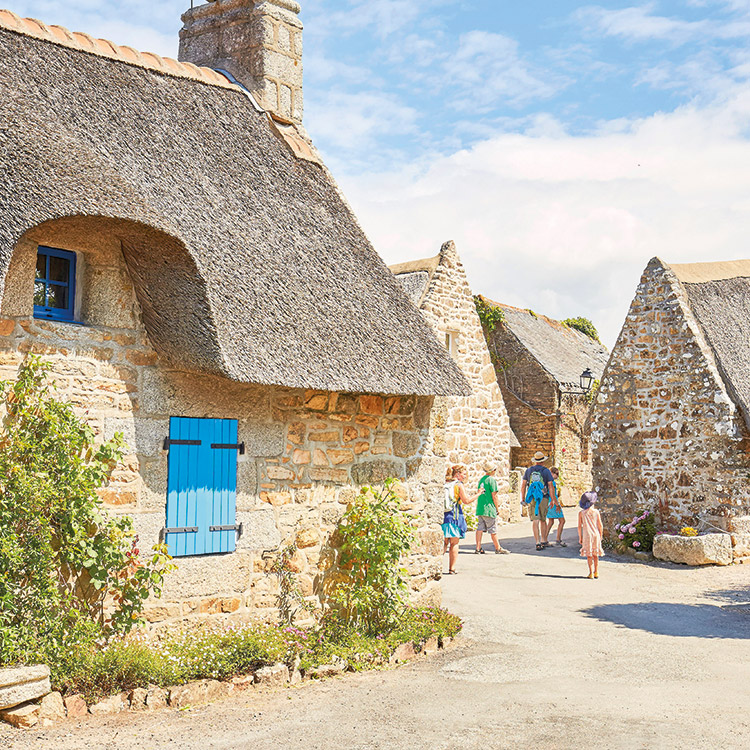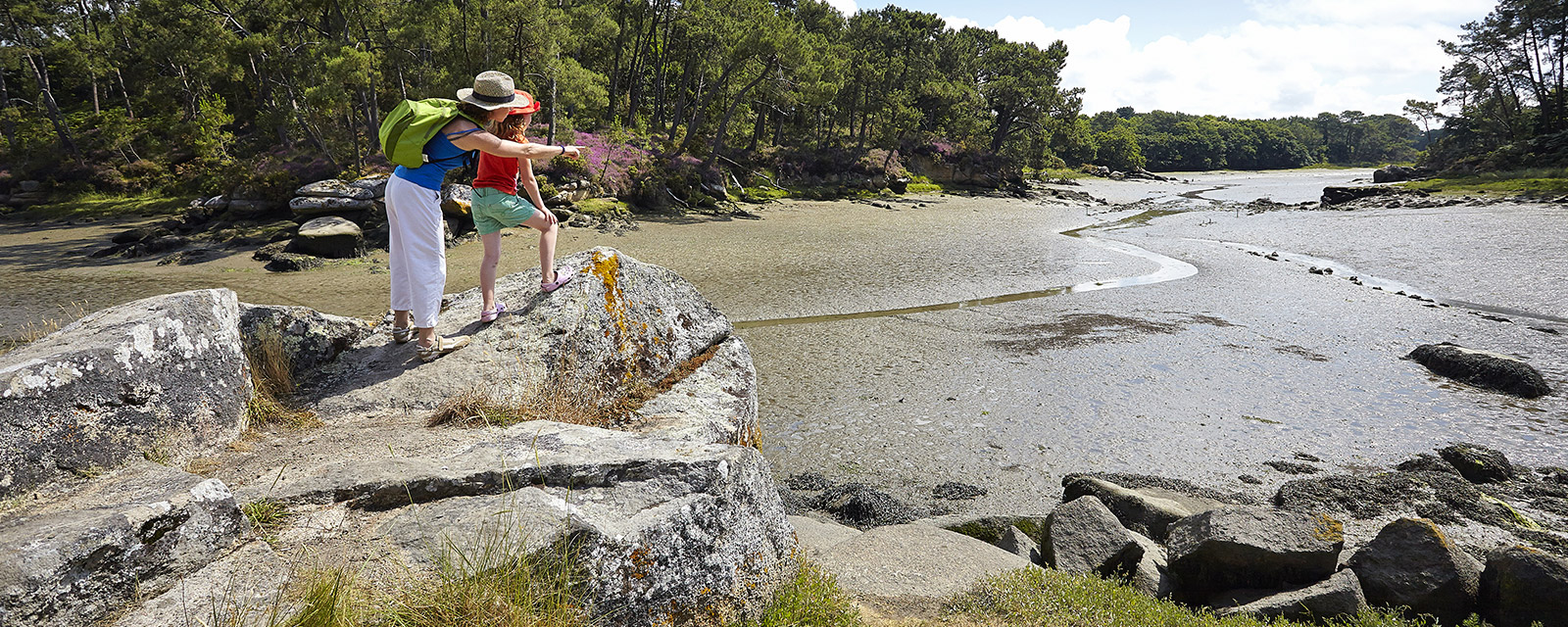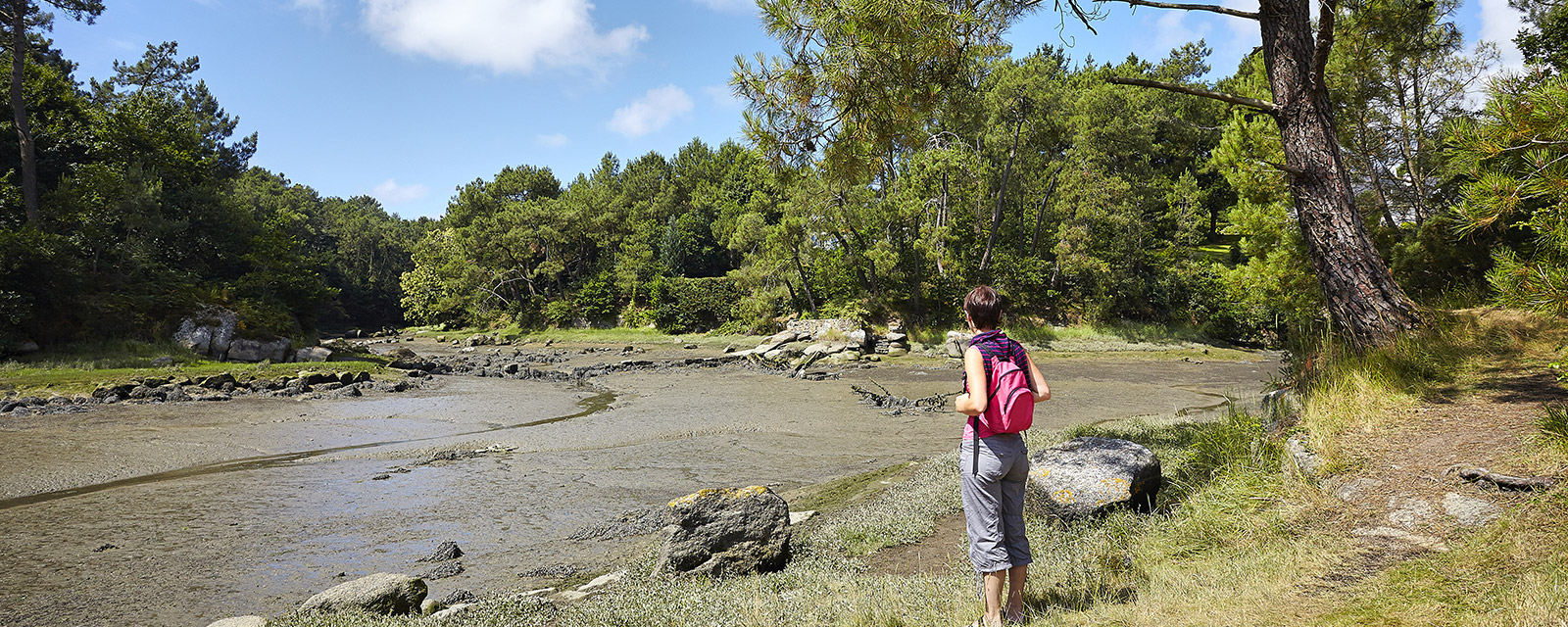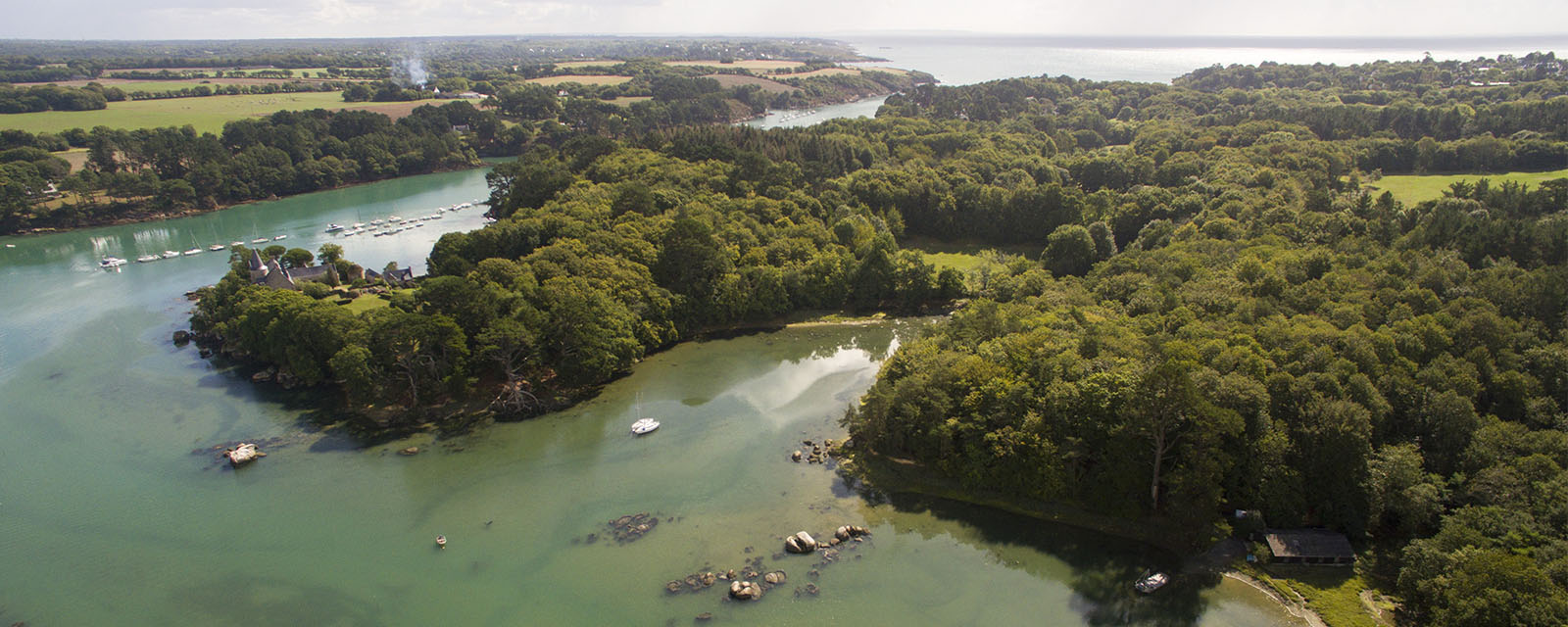

Brittany has preserved its precious vernacular heritage. Impossible not to fall in love with its little thatched houses hamlets, their blue shutters granite houses surrounded by Hydrangeas, so typical of Brittany!
The lovely hamlets of Kerascoët and Kercanic, remnants of the traditional architecture of the old time are nowadays one of the must-sees in Finistère.
Kercanic and Kerascooët are unquestionably the most beautiful villages of thatched houses in Southern Finistère. They are not listed and its only thanks to the goodwill of their owners that they have kept their traditional roofing.
.

Granite is omnipresent and is an integral part of the landscape. It used to be part of people’s life and used to build houses, bread ovens, wells, fences but also chapels and calvaries.
The granite from Névez and Trégunc was known to be the most solid of the area! It was used to build forts, quays or lighthouses.
In 1900, about a hundred quarrymen still worked in Névez in an open-air quarry deep in the cove of Kerochet. Nowadays, the only remains of this activity are the marks left by the tools on the blocks of granite and the slipways. You can access Kerochet by the GR34 pathway and by taking the trail n°4 from Port-Manec’h.

The cutting of the granite blocks remains visible

Some marks of tools remain visible on the blocks left in the river bed.

At high tide the remnants of the quarry are no longer visible, but the scenery becomes even more enchanting with the emerald green reflections of the water…
The most unusual granite structures are the Standing Stones fences and houses (end of 18th Century) called “Mein Zao” in Breton.
It is an architectural feature which can only be admired in Névez and Trégunc!
These unique constructions in France got the label “Landscape of reconquest” awarded by by the Ministry of Environment in 1993.
